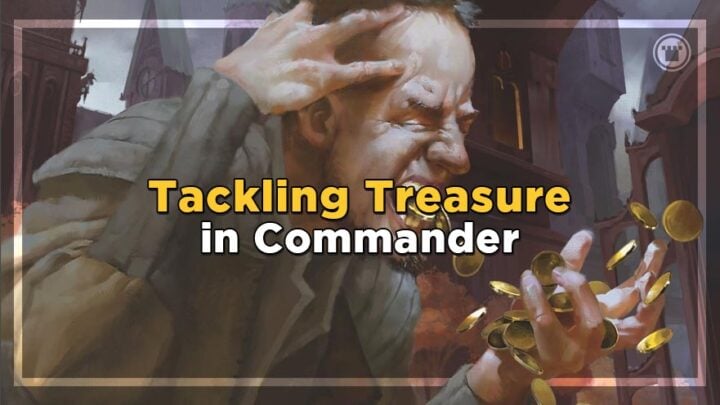Over the past couple of years, Treasures have permeated the Commander metagame at all power levels. Between the stifling stranglehold of Smothering Tithe, the explosive burst from Dockside Extortionist, and the constant stream from Pitiless Plunderer, we’re practically swimming in the stuff. It’s great when you’re the one with the Treasure, but it can prove to be a struggle to go up against without adequate preparation.
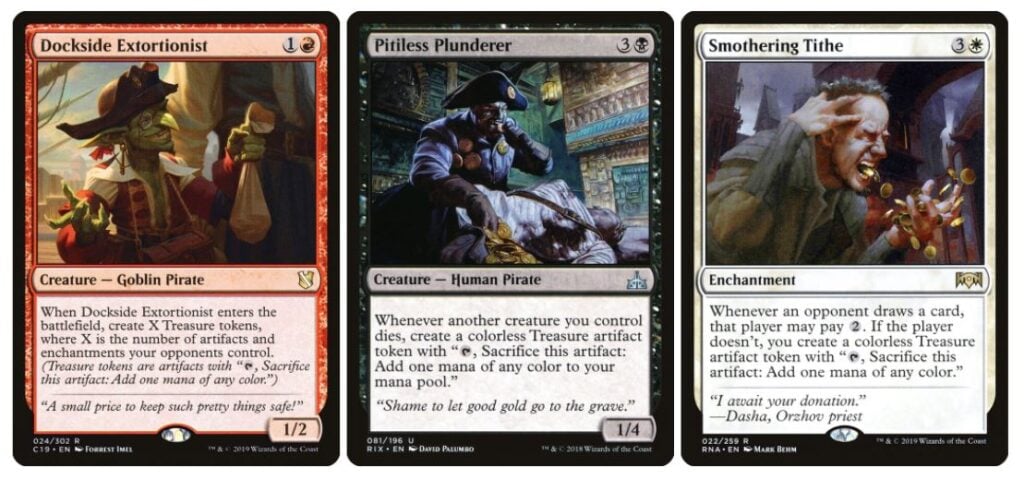
The obvious use of Treasures is for their mana, but their sheer numbers can easily turbo-charge cards like Nettlecyst, or turn Mayhem Devil and Korvold, Fae-Cursed King into game-ending problems. They’re having a very real and noticeable impact on the game, to the point that they’re becoming hard to ignore.
There may come a time when Treasures are so prevalent that you’ll need to find ways to interact with them. Here are some of the different ways that are currently available to help you manage everyone’s funds, and ensure nobody gets away with daylight robbery!
Bankruptcy
Pros: You remove all existing Treasures
Cons: They can crack Treasures in response or make more later
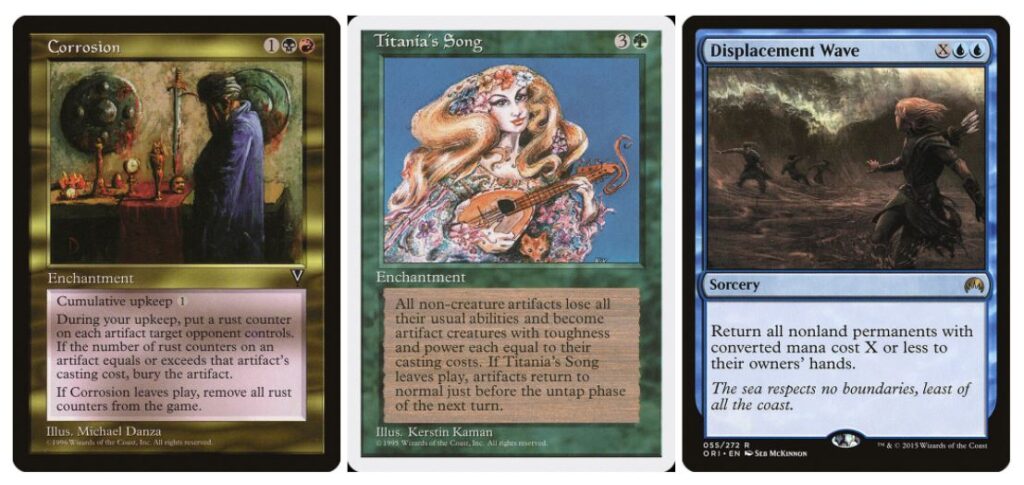
One of the simplest and most direct ways to deal with Treasures is to destroy them. Mass removal like Vandalblast or Cleansing Nova are obvious choices, but they can create a lot of splash damage to other players. If your goal is to focus on Treasures, then something like Corrosion may be a more suitable approach. It only hits one opponent at a time, and you can get rid of it at any stage by not paying its cumulative upkeep cost.
If you’re regularly dealing with multiple players that play Treasures, then Titania’s Song and Displacement Wave would work better. Titania’s Song will turn all Treasures into 0/0 creatures, so they’ll die immediately, whereas a Displacement Wave where X=0 will bounce them instead.

If you’re looking for universal answers, Karn, Silver Golem and Ratchet Bomb are great choices to deal with tokens, as well as other fast mana like Mana Crypt or Mox Amber. Activating Karn’s ability will destroy zero-cost artifacts in the same way Titania’s Song does, and sacrificing Ratchet Bomb will immediately take out all tokens, not just Treasures.
The upside to these is that they will have minimal impact on the rest of the board (except for Displacement Wave or Ratchet Bomb), but they’re not without their drawbacks. Your opponents can still just crack their Treasures in response to these effects, and they can always just make more afterwards!
Make Their Money Work For You
Pros: You benefit from their Treasures
Cons: They still have Treasures
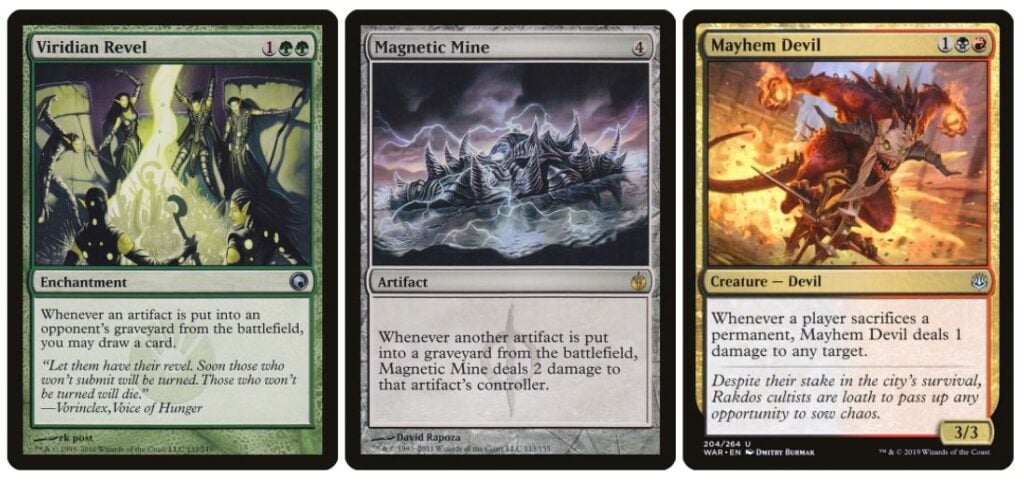
If you’d prefer to gain advantage from your opponents playing Treasures, you can always play some punisher effects. Viridian Revel is becoming increasingly popular for its incredible value against Treasures, and will incidentally reward you whenever someone chump blocks with a Solemn Simulacrum. It doesn’t always work out against Smothering Tithe, though, as you’ll have to pay mana to prevent it from making more Treasures for your opponent!
An alternative to card draw is direct damage. Magnetic Mine can shave off a lot of life in very little time; it puts pressure on Treasure-laden opponents to choose between slowing down and potentially losing the game. Disciple of the Vault is a similar effect, but since you choose the target, you can direct the damage wherever you see fit.
Mayhem Devil is incredible in any Treasure-producing deck, and it can be used against them just as easily. It also works brilliantly against fetch lands, Clues, and Aristocrats decks, so it has much more utility than just dedicated Treasure hate, and makes for a much easier addition to many red/black decks.
As with all options, this approach isn’t perfect, as you aren’t preventing your opponents from making Treasures or using them immediately. To do that, things will have to get a bit more taxing…
Tax Returns
Pros: Massively reduce the effectiveness of Treasures
Cons: People may not like it
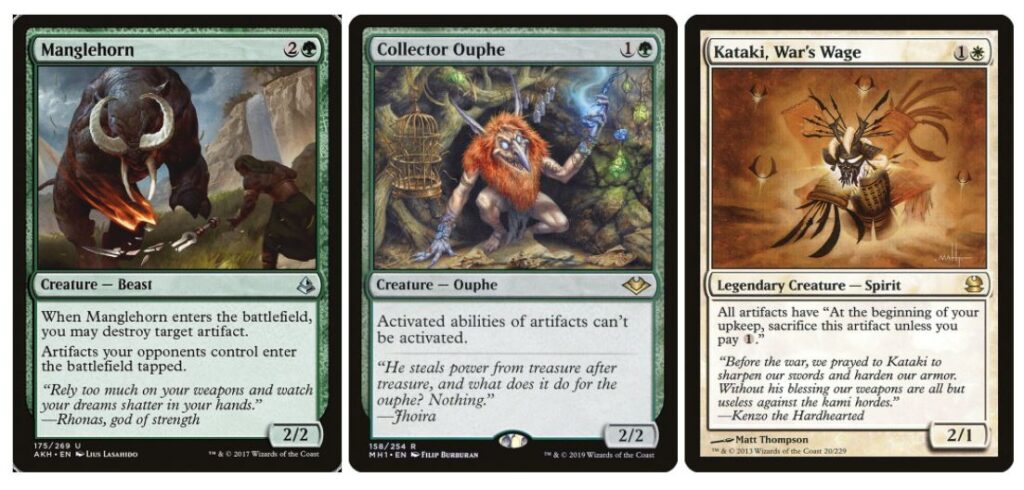
In Kristen’s recent article on the difference between Tax and Stax, she made the case that “tax” cards should be more acceptable in casual Commander. Manglehorn is one such card, and while it doesn’t see much play at casual tables, it could prove to be one of the best and fairest ways to regulate heavy Treasure usage. Blind Obedience would also perform similarly in this role.
If you’d rather take a stricter approach, Collector Ouphe and Stony Silence can stop Treasures dead in their tracks. In the abstract, they’re reasonably fair; if a player removes the Ouphe, they can use their Treasures again. The issue, however, is similar to the Vandalblast problem: splash damage. Mana rocks get shut down, Equipment no longer works, and many decks simply fail to function. It may still be fine in your pod, but just be sure that it won’t ruin somebody’s entire game.
Kataki, War’s Wage is another option that seems tailor-made for keeping Treasures in check. Just like Collector Ouphe, it can end up crippling entire decks and game plans instead. At higher power levels, anything goes; at lower levels, this may be a step too far. Again, keep the decks you’ll be facing in mind, as well as the kind of game you’re looking to have, and you’ll have a good idea of what’s appropriate to play.
While these may be some of the most effective options for keeping Treasures in check, they won’t always be appreciated. I believe that hatebears and similar effects can be normalized and accepted more over time, but you may experience less enthusiastic responses by playing these cards over any other option on this list.
If You Can’t Beat ’Em, Join ’Em
Pros: You get a lot of Treasures
Cons: You’ve become that which you vowed to destroy
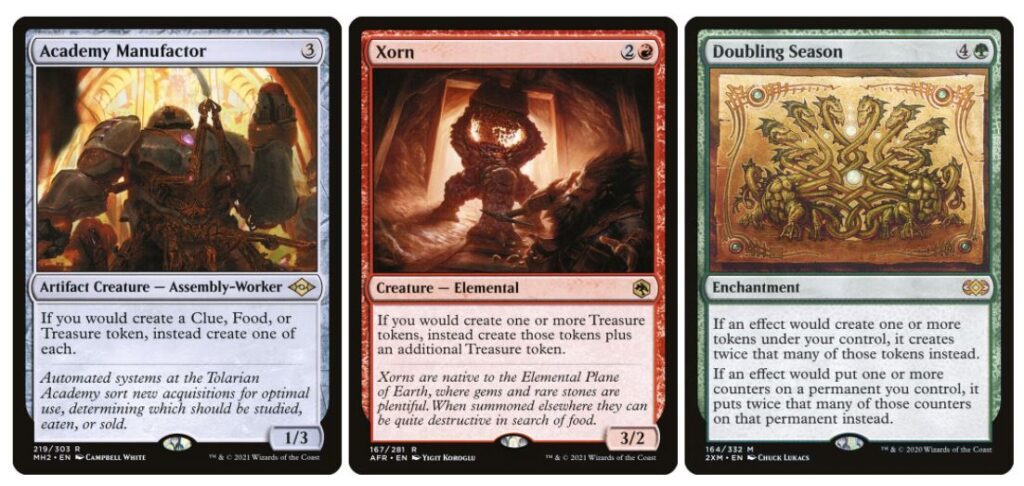
I’ve been painting Treasures as the bogeyman of Commander, but they’re honestly a lot of fun to play with as well. There’s nothing wrong with playing your own Dockside or Tithe and having a blast, provided it’s a suitable power level for the game you’re playing. While you’re at it, why not double down and really push your production into overdrive?
If it’s game objects you’re after, there is absolutely no substitute for Academy Manufactor. This Assembly-Worker will have you reaching for more tokens than you own before long; while the Clue and Food tokens aren’t quite as good as Treasures, they can be used in myriad ways. My personal favorite application is to use Clues and Food to untap my Sol Ring with Clock of Omens, but I’ve also used them to draw cards and gain life in a pinch!
Xorn is a red Treasure support staple in the making, giving you an additional token whenever you make one or more Treasures. It also works particularly well with Academy Manufactor: if you make a single Treasure token while both of these are on the field, you would instead get two Treasures, two Clues, and two Food tokens! Making six artifacts instead of one is a surefire way to power ahead of everyone else, even other Treasure-makers.
Finally, Doubling Season effects are obviously incredible with Treasures. They also stack, so if you have an Anointed Procession on the field with a Doubling Season, you’ll get four Treasures for every one you were going to make! This may sound like overkill, but sometimes Commander is all about the spectacle. Just don’t be surprised if your opponents start adding Collector Ouphe or Mayhem Devil to their decks!
Are Treasures a chronic enough problem to warrant explicit answers, like creature removal or graveyard hate? I don’t think we’re there just yet, but it’s good to know what you can do against it, particularly if your regular pod uses or abuses Treasures to a higher degree. But if your decks are in a strategy that could reasonably add any of the above cards to serve additional purposes – like Mayhem Devil in sacrifice decks or Displacement Wave in grindy blue decks – then they’ll make great insurance against the flowing gold.
Do you think Treasure-producers should be reined in, or are they a part of the format that makes it more fun? I’d love to know what you think, so let me know over on Twitter. Happy investing!

Scott is an Irish content creator and the Head of Budget Magic for the Izzet League. He focuses on affordable decks in Pioneer, Modern, and Pauper, particularly ones that stray from the mainstream. When he’s not writing about his favorite decks, he can be found talking incessantly about them on Twitter and on The Budget Magic Cast.

